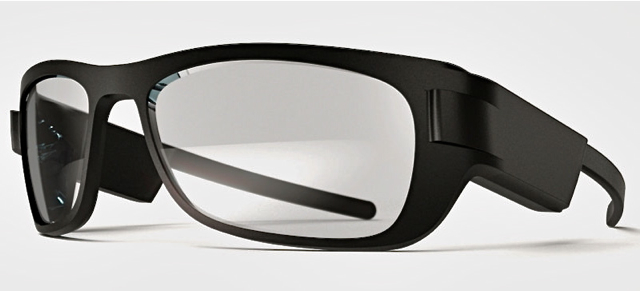CES: Zeiss Comes Up with Optics for Superior Smart Glasses
January 14, 2016
Carl Zeiss — notable manufacturer of lenses for motion picture and consumer cameras — now has the technology for smart glasses that makes use of more than a decade of work on head-mounted displays and two centuries of work on lenses. Best of all, the resulting smart glasses look and feel exactly like ordinary prescription lenses — and, in fact, can combine optical prescriptions and “smart” technology. Zeiss did it by integrating a Fresnel structure into a standard lens, and placing a very small display at the end of the lens.
Wired notes that “there are complicated optics at play here, but essentially the light from the display is reflected into the lens and hits the Fresnel structure, which reflects that light into your eye.” A smartphone feeds images to the system, and a smartwatch controls navigation.
“There’s plenty to say about wearing Zeiss’s smart glasses, but the most important point — at this stage, maybe the only point — to make is that they feel like glasses. Not clunky glasses, not heavy glasses, not glasses with Coke-bottle lenses or a dorky attachment that telegraphs just how many years in the future you live. They feel like the glasses you wear every day.”
Design is crucial to smart glasses as well as ordinary ones, says Zeiss Smart Optics lead Dr. Kai Jens Ströder. “It’s an illusion right now to think that somebody goes to an optician and really wants a perfect lens,” he says. “He just wants a perfect frame that looks good afterward.” Zeiss’ next-gen smart glasses, in development, will feature lenses even lighter than today’s model and its slightly (5 grams) heavier lenses.
There is room for improvement: the Fresnel’s position means it’s a “squint-down” more than a heads-up display; text is too blurry to read and images are hard to see against a bright background. The upcoming OLED screen should improve the last problem. Now all Zeiss needs is a partner. “As for software, that will come with users, who won’t exist until there’s an actual product, which won’t happen until Zeiss ramps up production.”
“Our competence is to provide the consumer the missing link in optics,” says Ströder. “Everything else has to be done by a system integrator who is innovative enough to shape this market.”


No Comments Yet
You can be the first to comment!
Sorry, comments for this entry are closed at this time.